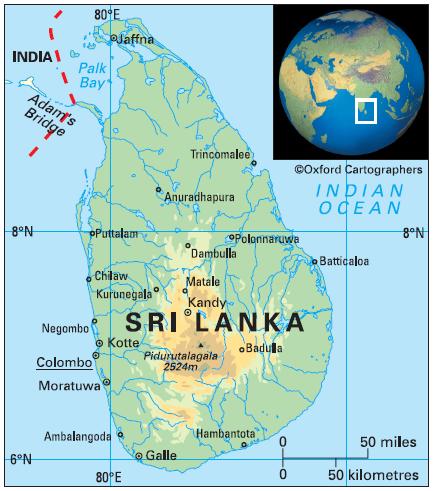Education in Sri Lanka
Joined Commonwealth: 1948 
Population: 20,238,000 (2009)
GDP p.c. growth: 4.0% of p.a. 1990-2009
UN HDI 2010: world ranking 91
Net primary enrolment: 95.1% (2009)
Adult literacy: 90.6% (2008)
There are eleven years of compulsory education starting at age five. Net primary enrolment is 95.1% with female-male ratio of 1.00:1 and pupil-teacher ratio of 23:1 (2009). Some 99% of pupils complete primary school (2006). The school year starts in January.
Higher education is provided for by the country’s many universities and technical colleges. The most prominent universities include University of Colombo, University of Kelaniya, University of Peradeniya and Open University of Sri Lanka, which provides courses through distance learning. There are various technical colleges offering courses up to diploma level in the areas of engineering, business and commerce. Literacy among people aged 15-24 is 98% (2008).
The tsunami of December 2004 and its aftermath affected over 350,000 children and around 650 schools, and rehabilitation and modernisation programmes are continuing. The Sri Lankan government, donor organisations and the international community have worked together to restore education facilities and to address the enduring psychological effects of the disaster.



